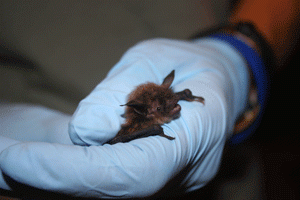Help Bats With Simple Efforts in the Garden
Bats are incredibly helpful animals and an important part of the ecosystem because they eat great quantities of insects, particularly moths and mosquitoes. A bat can eat 600 insects per hour. Their natural habitats are in decline, but we can easily help bats by taking a few simple steps in the garden.
To help bats:
- Include plants that open their flowers late in the day or in the evening and/or keep their flowers open all night. These plants attract night-flying insects that are the bats’ food.
- Ideally, the plants you choose for your bat-gardening efforts should be native to your area, because those will best attract the bats’ target insects.
- Avoid using pesticides.
- Consider leaving parts of your property unmown to encourage insect reproduction. Plant an insectary garden to further encourage insects that in turn become food for bats and other helpful predators.
- If it’s safe to do so, leave dead trees standing to provide potential roosting sites for bats. Snags, as they’re called, are also very helpful to woodpeckers and other birds that nest in cavities and consume insects that bore into dead wood.
- Bats seek shaded sites to rest in during the day. A hedge or a vine-covered wall can help bats with this need.

A scientist holds a little brown bat, which can eat up to 600 nuisance insects in an hour. You’ve heard of bird gardens, butterfly gardens, hummingbird gardens and bee-friendly gardens. Why not take your wildlife gardening to the next level with a bat garden?